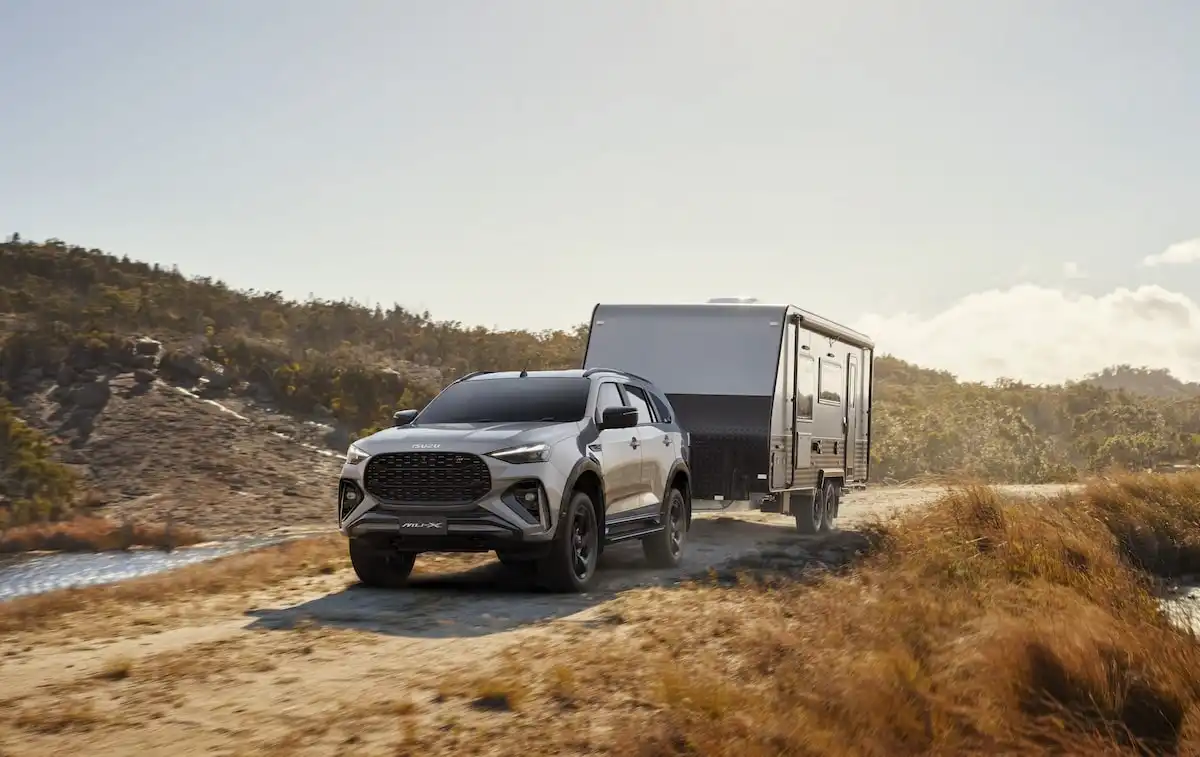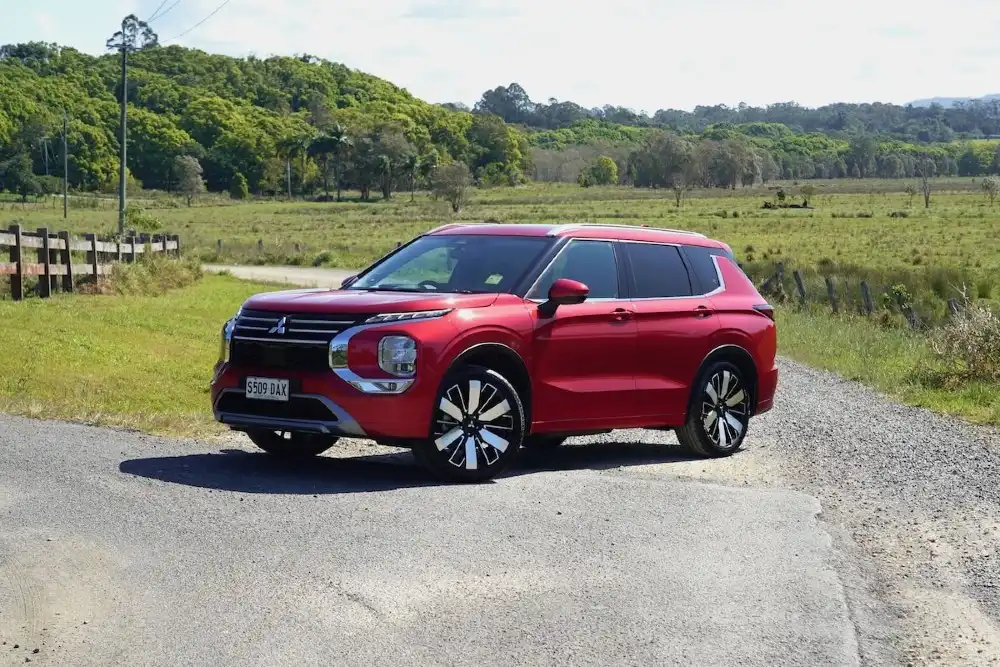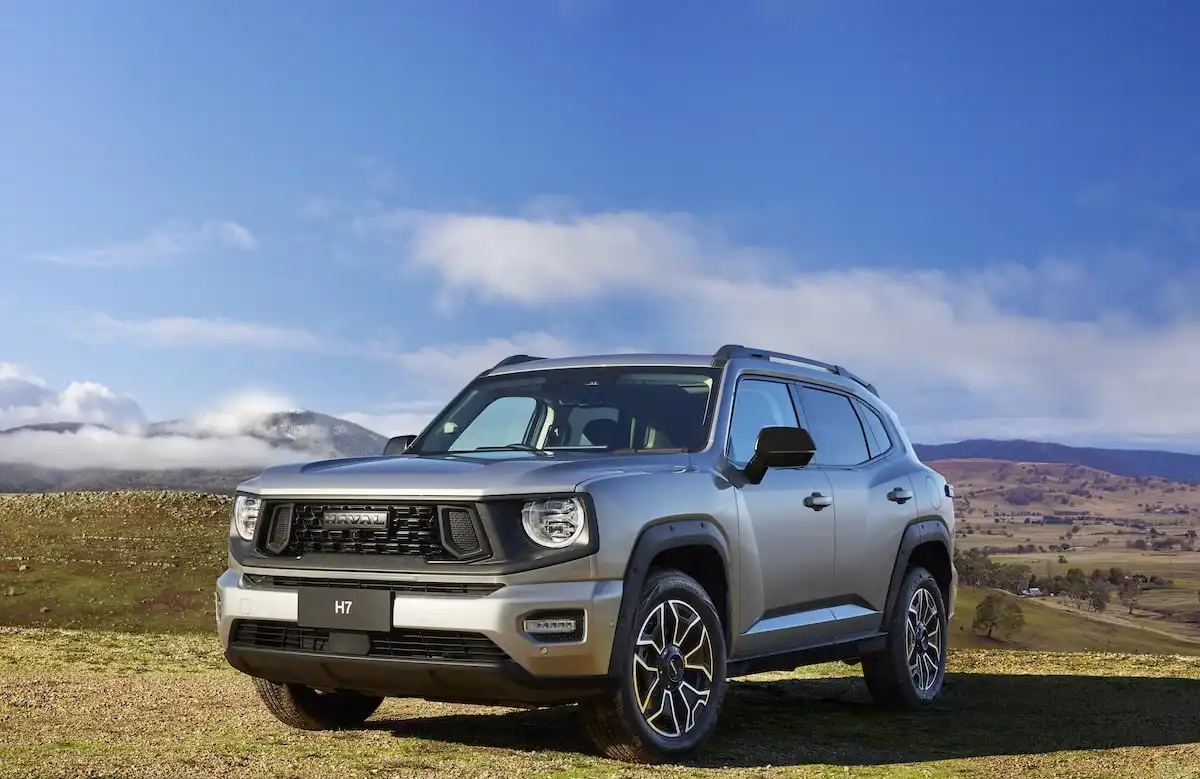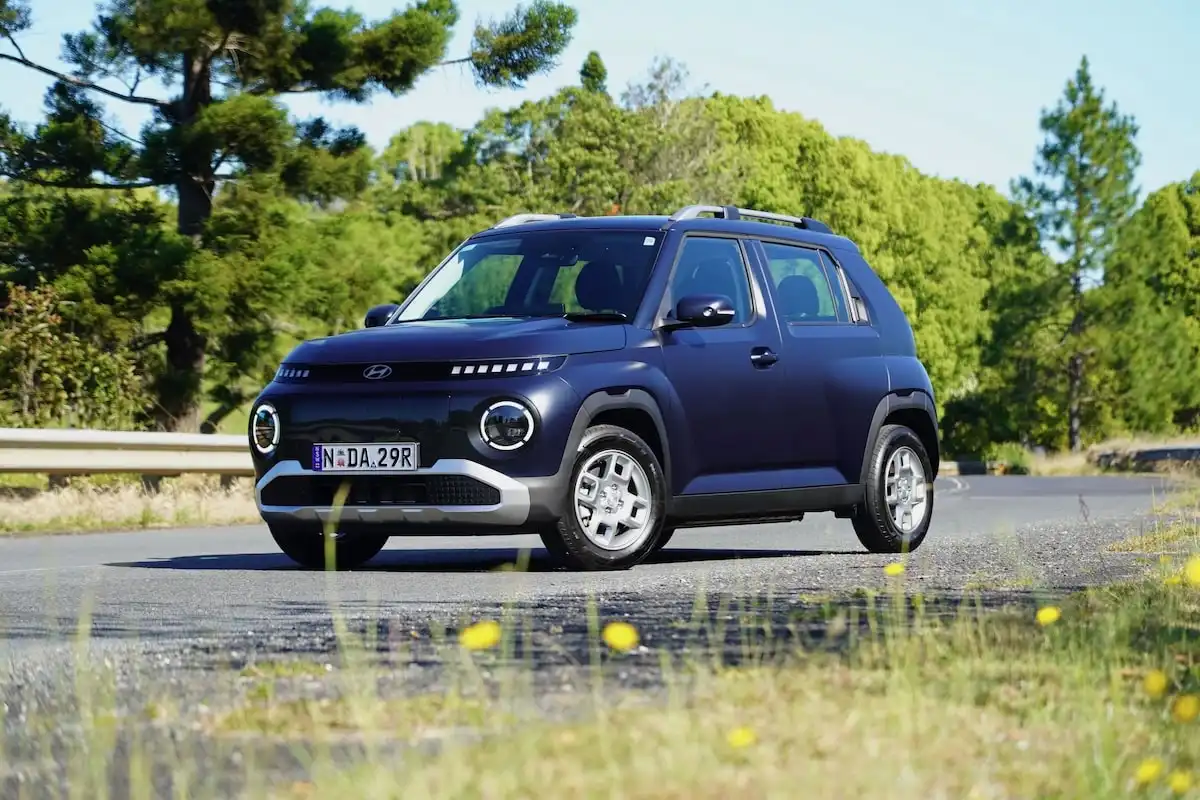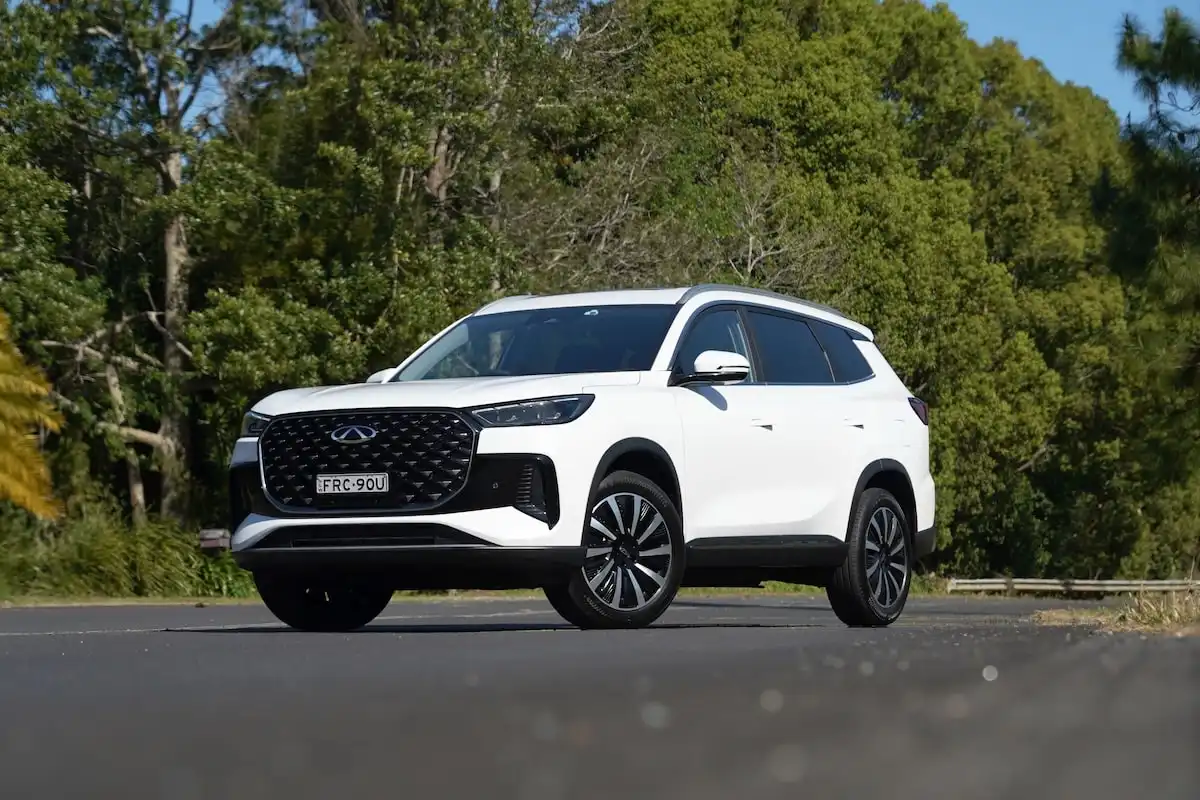Braked towing figures are one of the biggest selling points of large, adventurous SUV packages, with buyers really testing out the ‘U’ for ‘utility’ in SUV with a boat, trailer or caravan for a trip around the country.
What’s less understood is the fact that in order to tow safely, you can’t just max out your vehicle’s towing capacity because it’s likely you’ll be over a certain limit that keeps you and your vehicle within a safe margin.
Let’s take a quick look at the fundamentals of towing, gain an understanding of things like GVM, GCM and why it’s essential you factor in the weight of your towball, then map out some of the towing capacities for the most popular SUVs and 4x4s currently on sale in 2025.
Understanding GVM, GCM and Why They’re So Important for Towing
Before we jump into the figures, let’s take a quick look at what GVM and GCM figures mean.
-
Gross Vehicle Mass (GVM) is a rating applied by the manufacturer that outlines its maximum possible weight to safely travel when it’s fully loaded with people, bags, fuel, as well as any off-road or camping accessories you’ve mounted to the frame or body.
The GVM is a figure that effectively sets a limit for how much weight the factory brakes, suspension and tyres can safely handle - but does not include the weight of what you’re towing.
-
Gross Combination Mass (GCM) refers to the amount of weight your vehicle is rated to safely transport, including the weight of a fully loaded vehicle and the trailer that you’re towing.
GCM figures are set by the manufacturer and, quite simply, set out the maximum weight limitations that your vehicle can safely and legally tow, inclusive of a fully loaded cabin.
A simple rule for towing is that you should never, ever exceed the gross combination mass figures for your vehicle when you’ve factored in 10% weight of the tow ball, the amount you're towing, the weight of the vehicle, payload - like your passengers and cargo - as well as any accessories.
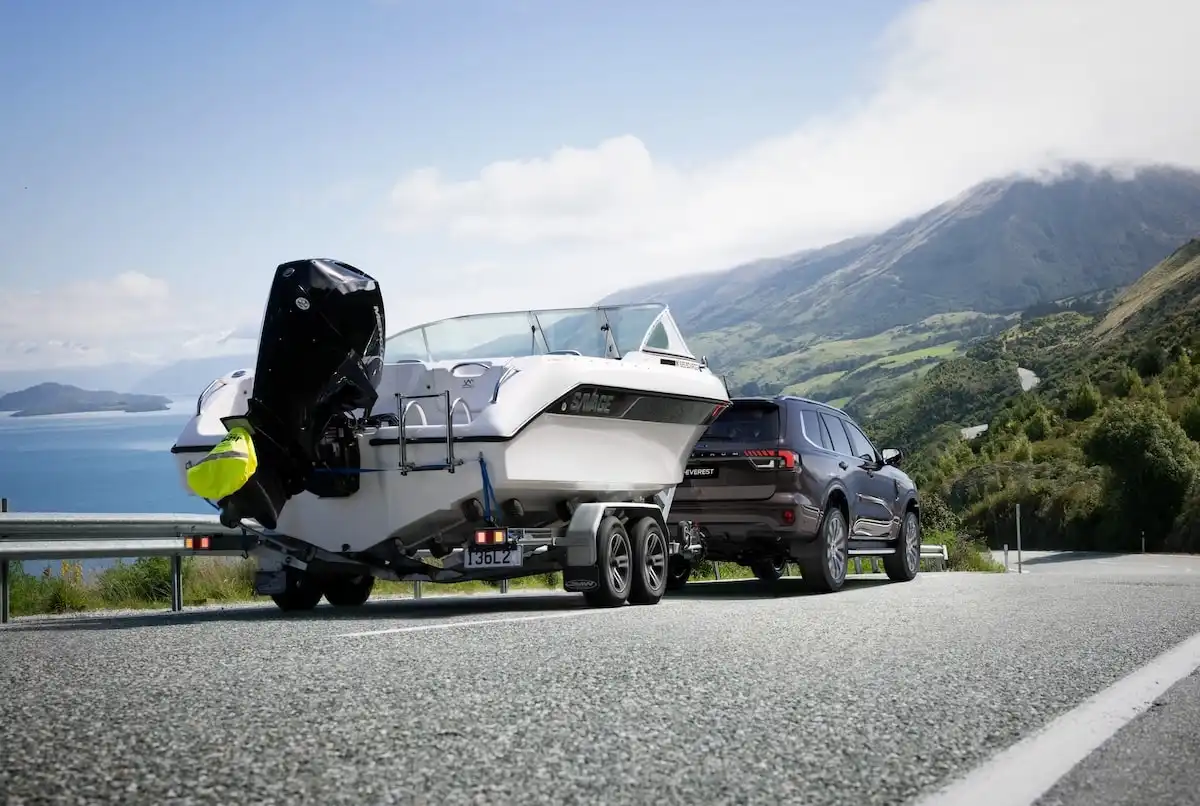
What’s the Difference Between Braked and Unbraked Towing Capacity?
-
Unbraked Towing Capacity: refers to the maximum towing figures for a trailer that is not fitted with a set of its own brakes - this is capped at 750kg, regardless of the vehicle here in Australia.
-
Braked Towing Capacity: represents the maximum load that your vehicle is able to tow with a trailer fitted with a set of factory brakes that provide additional stopping power alongside your vehicle’s brakes.
Get in touch with one of our Car Buying Specialists today.
Request a quoteWhy is the Tow Ball Rating Important for Towing?
The tow ball weight (TBW) limit, or rating, is another essential consideration while towing.
The TBW sets out the maximum amount of weight you can apply to the tow ball that is mounted to the rear of your vehicle’s frame.
On average, tow ball weight should sit at around 10 per cent of the overall load you’re towing, though you’ll need to check the maximum possible tow ball weight set by the manufacturer to ensure you’re within TBW limits.
How to Calculate Your Towing Capacity
There’s a simple formula to ensure you’re towing with a safe margin.
Again, it’s not about the numbers you’ve seen on the spec sheet or the TV ad, it’s a simple numbers game to ensure you’re not exceeding the vehicle’s GCM.
Towing Capacity = kerb weight + trailer combination mass + 10% towball download subtracted from gross combination mass.
This towing formula will also give you a clear picture of how much weight you’ve got left to fill with yourself, passengers, cargo and any off-road or camping accessories you’re lugging around with you.
For an even safer formula, you can simply subtract the gross vehicle mass (GVM) from the gross combination mass (GCM).
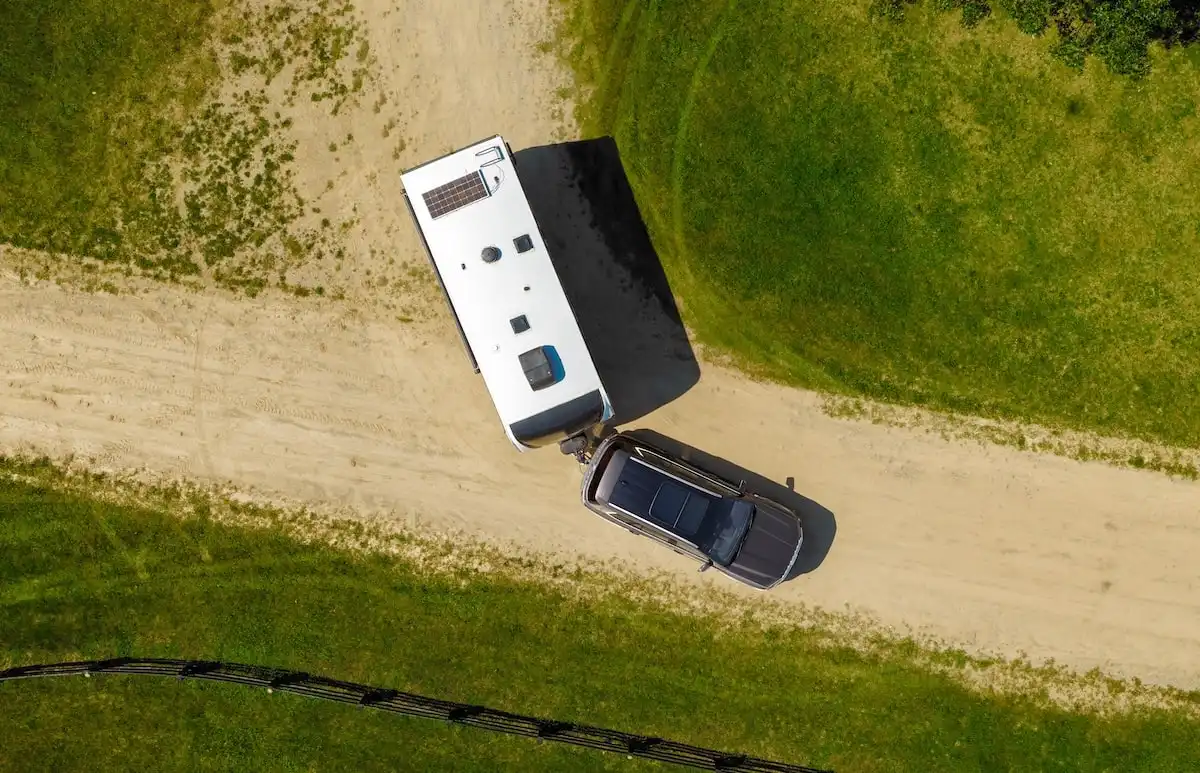
How Much Can My SUV or 4x4 Tow?
Below, we’ve compiled a list of some of the best-selling SUVs on sale in Australia in 2025 and mapped out their braked towing capacities.
This list includes everything from compact SUVs to more family-friendly midsize SUV packages, as well as large SUVs with a heavy-duty body-on-frame construction which are by far the best option for maximum towing figures.
Note that this list of models may not cover each specific variant in the lineup and you should always check with the factory manual and confirm these figures before you tow any extremely large loads.
-
Audi Q5 - 2,000kg
-
Audi Q7 - 3,500kg
-
BMW X3 - 2,000 - 2,500kg
-
BMW X5 - 2,700kg
-
BMW X7 - 2,700kg
-
BYD Sealion 6 - 1,300kg
-
BYD Sealion 7 - 750 - 1,500kg
-
Chery Tiggo 8 Pro Max - 1,300kg
-
Cupra Formentor - 1,800kg
-
Deepal S07 - 1,500kg
-
Ford Everest - 3,500kg
-
Genesis GV70 - 2,200kg
-
Genesis GV80 - 2,722kg
-
GWM Tank 300 - 3,000kg
-
GWM Tank 500 - 3,000kg
-
GWM Haval H6 & H6 GT - 1,500 - 2,000kg
-
Honda CR-V - 1,500kg
-
Hyundai Tucson - 1,650 - 1,900kg
-
Hyundai Santa Fe - 2,000kg
-
Hyundai Palisade - 2,200kg
-
Isuzu MU-X - 3,000 - 3,500kg
-
Jaecoo J7 - 1,350kg
-
Jeep Grand Cherokee - 2,268 - 3,500kg
-
Kia Sportage - 1,650 - 1,900kg
-
Kia Sorento - 1,650 - 2,000kg
-
Land Rover Discovery - 3,500kg
-
Land Rover Defender - 3,000 - 3,500kg
-
Land Rover Range Rover - 3,500kg
-
Lexus GX - 3,500kg
-
LDV D90 - 3,000kg
-
Mazda CX-3 - 640 - 1,200kg
-
Mazda CX-5 - 1,800 - 2,000kg
-
Mazda CX-60 - 2,500kg
-
Mazda CX-70 - 2,500kg
-
Mazda CX-80 - 2,500kg
-
Mazda CX-90 - 2,500kg
-
Mercedes-Benz GLC - 1,800 - 2,400kg
-
Mercedes-Benz GLE - 2,700kg
-
MG ZS - 500kg
-
MG HS - 1,500kg
-
MG QS - 2,000kg
-
Mitsubishi Outlander - 1,600kg
-
Mitsubishi Pajero Sport - 3,100kg
-
Nissan X-Trail - 2,000kg
-
Nissan Patrol - 3,500kg
-
Nissan Pathfinder - 2,800kg
-
Tesla Model Y - 1,600kg
-
Toyota RAV4 - 480 - 800 - 1,500kg
-
Toyota LandCruiser 300 Series - 3,500kg
-
Toyota LandCruiser Prado - 3,500kg
-
Toyota LandCruiser 70 Series - 3,500kg
-
Skoda Kamiq - 1,200kg
-
Skoda Kodiaq - 2,300kg
-
Subaru Forester - 1,200 - 1,800kg
-
Subaru Outback - 2,000 - 2,400kg
-
Suzuki Jimny - 1,300kg
-
Volkswagen Tiguan - 2,400kg
-
Volkswagen Tayron - 2,500kg
-
Volkswagen Touareg - 3,500kg
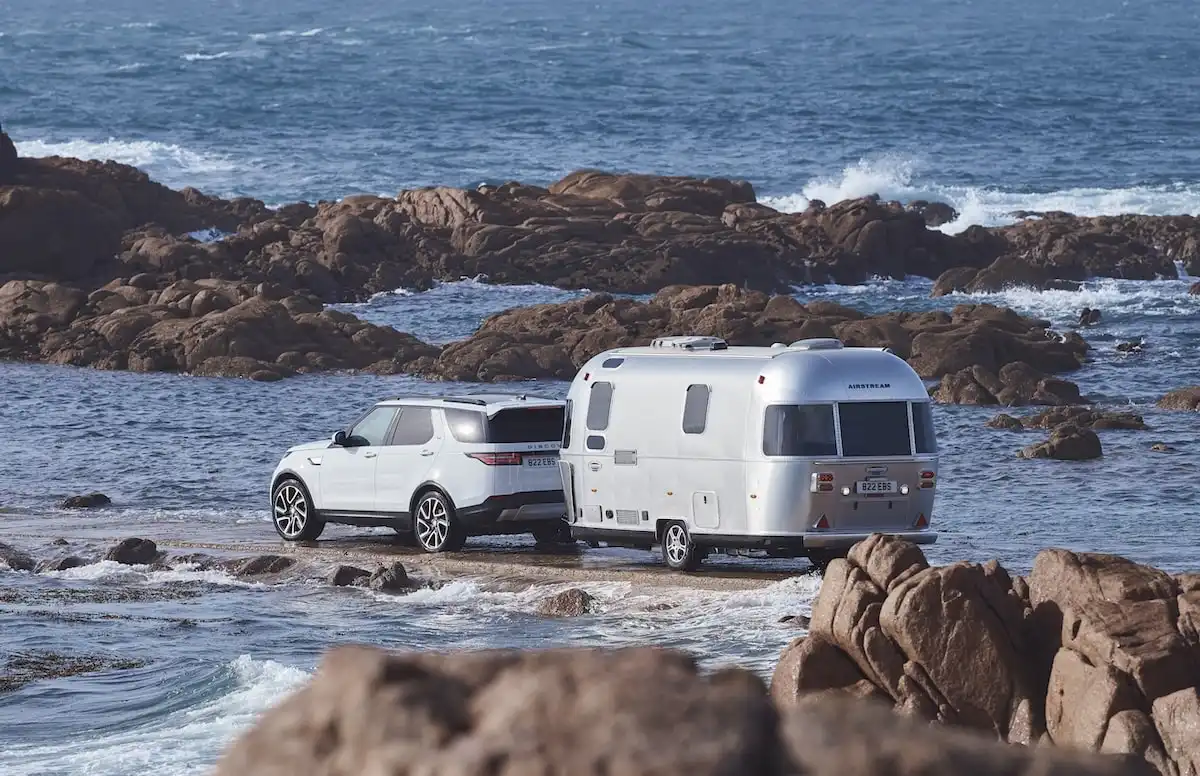
How to Find Out How Much Your SUV Can Tow
The easiest way to find out your vehicle’s braked and unbraked towing capacities is to check the vehicle manual, which should contain a list of specifications that includes engine details, GVM & GCM figures and your respective braked and unbraked towing figures.
If you’re unable to find your vehicle’s manual, try to track down an online version listed on the manufacturer’s website.
Failing that, you can try to find these details listed online with specific information on the make, model, year, engine size and type, as well as the drivetrain - for example, front-wheel drive and all-wheel drive.
Be sure to cross-reference these details before towing any extremely heavy loads so you’re not hooking up a trailer with blind confidence.
Remember, the safest formula to calculate exactly how much your SUV can tow is to subtract the gross vehicle mass (how much your fully loaded, but still legal vehicle weights) from the gross combination mass, inclusive of a 10 per cent allowance for the tow ball download.
Request a Quote
If you’re looking for the best possible price on your next car, be sure to reach out one of our car-buying experts.
Get in touch with one of our Car Buying Specialists today.
Request a quote